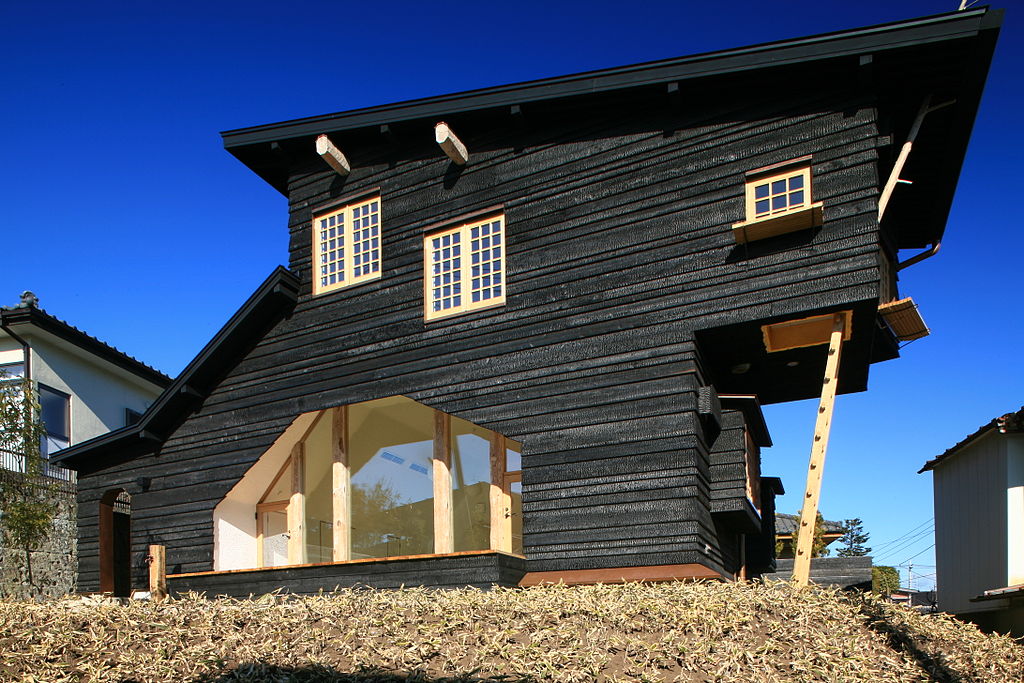Building with wood is trendy. The reasons for this are, in addition to increased awareness of environmental concerns, the special physical properties of the material and, last but not least, the successful elimination of old prejudices regarding durability and fire protection. Within this rekindled love for natural building materials is a kind of sub-movement that has been in motion over the last couple of years which strangely is not about just normal wood but charred wood. What might seem like a daring demonstration of heat resistance, in reality follows a tried and tested process from the Far East which actually improves the resistance and durability of wood.
 © By japanese_craft_construction (Flickr) [CC BY 2.0 (http://creativecommons.org/licenses/by/2.0)], via Wikimedia Commons
© By japanese_craft_construction (Flickr) [CC BY 2.0 (http://creativecommons.org/licenses/by/2.0)], via Wikimedia Commons
A casual observer might shiver at the sight of facades made of carbonated wood because it gives the impression that the house has just escaped a flaming inferno. But things are different than they seem. Carbonated wood is wood that is deliberately charred up to a certain point. Just the top layer of the wood is burned, while the remaining underwood is unaffected by the fire.
"Beauty" and damage that protects
Working on a wooden facade in this way can be useful in many ways. Carbonated wood is used by many primarily for aesthetic reasons. Depending on the type of wood and the depth of the combustion, a variety of interesting surfaces can be created which visually stand out from the usual facades. The wood grain and fiber structures which are unique for each piece of wood are additionally highlighted by the charring.
The beauty of carbonated wood is definitely in the eye of the beholder. But there is a positive structural aspect to the process beyond a doubt. The charring compresses the cells in the material. In this way the wood "seals itself" against mildew, water, rot, weathering and insects. What looks like "fire damage" turns out to be effective protection for the outside area, making treatment with toxic chemical wood protection agents superfluous. While worries are eliminated due to its charred exterior facade, carbonated wood needs special treatment in interior use - for example, by means of polyurethane coating - so that the ash layer does not wear off.
Who invented it?
Although this appears to be a fairly new trend, it has been established in its country of origin for centuries. “Yakisugi” – “charred cedar” – as the process is called, was developed in the 18th century in Japan to intentionally char the cedar planks used for façades. Although carbonated facades fell out of use in the 20th century due to the introduction of plastic and cement-based panels, they have experienced a renaissance since the early 2000s. The method has since come to the attention of architects and designers in North America and Europe.
Conclusion
Whether the Yakisugi method was unknown in the western world until recently or whether there was simply an aversion to the charred facades, is unclear. But its 're-discovery' here demonstrates that a look around the world at other building traditions can provide not only aesthetic but also technical inspiration.





